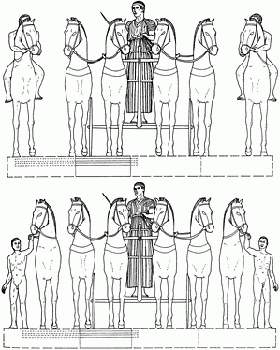American Journal of Archaeology | The Journal of the Archaeological Institute of America
You are here
Delphic Enigmas? The Γέλας ἀνάσσων, Polyzalos, and the Charioteer Statue
January 2008 (112.1)
Delphic Enigmas? The Γέλας ἀνάσσων, Polyzalos, and the Charioteer Statue
The commonly accepted reconstruction of the historical and artistic backgrounds of the celebrated Charioteer of Delphi statue rests on a delicate chain of reasoning connected with the inscription on a base block from the sanctuary. The two partial lines of writing that make up this exceptional epigraphic document identify two dedicants: a Gelas anasson (ruler of Gela), which can be read underneath a rasura; and Polyzalos, son of Deinomenes and brother of Gelon, Hieron, and Thrasyboulos. Since the discovery of the bronze statue and the base, scholars have sought to combine the statue, the base block, and the dedicants with literary sources relating to the Deinomenids, their athletic successes at Olympia and Delphi, and political events occurring in Sicily. The purpose of the present study is to analyze fully the archaeological evidence in light of a detailed paleographic investigation of the inscription on the base, as well as provide a stylistic examination of the sculpture. I suggest that there were two different dedications set up in the sanctuary at Delphi: one dedicated by the Gelas anasson, later appropriated by Polyzalos, and another (by an unknown dedicant) represented by the Charioteer statue, which should be dated between 470 and 450 B.C.E.
Delphic Enigmas? The Γέλας ἀνάσσων, Polyzalos, and the Charioteer Statue
By Gianfranco Adornato
American Journal of Archaeology Vol. 112, No. 1 (January 2008), pp. 29–55
DOI: 10.3764/aja.112.1.29
© 2008 Archaeological Institute of America


